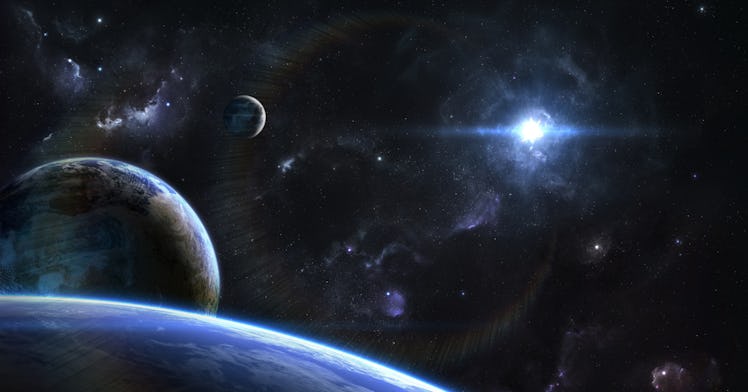How to Watch the Planets Align for the First Time in Years
The sky show will allow us to see five planets without the need of a telescope.

If you and the kids love sky shows, there’s an exciting event that’s happening this year. Five planets will be visible to the naked eye and will line up across the sky this summer. The non-typical alignment will be viewable thanks to the moon, and this type of event doesn’t happen a whole lot. If you’re interested in watching this cool event with the kids or your special someone, here’s what you need to know.
The planets aligning isn’t a timed event like full moons or eclipses.
According to LiveScience, when five planets align and can be seen without needing to use binoculars or telescopes, it’s not something that happens a lot. In fact, they occur very irregularly. Michelle Nichols, director of public observing at Chicago’s Adler Planetarium, told the publication that it last happened in 2020, 2016 before that, and 2005 the time before.
“We don’t always get this opportunity,” Nichols said. “Sometimes, it’s one or two in the sky; a lot of times, it’s none.”
Thankfully, the next time the planets are set to align is this summer. And skywatchers can already see the plants start to take alignment.
When will the planets align?
LiveScience makes a point to say that the planets aren’t really in a perfect line, though it does look that way when all the planets are at a certain point. The alignment is a “trick of perspective,” LiveScience explains, saying, “the planets orbit the sun on a flat plane, so when they happen to be passing near each other, they look, from Earth’s perspective, to be in line. An observer looking down at the solar system from above wouldn’t see a straight line at all.”
But even still, when are the planets supposed to go and line up even if it’s a matter of perspective. It won’t happen all at once but over the course of about a month the planets will be in the perfect “alignment.”
Jupiter will join a line with Saturn, Mars, and Venus on April 17. The moon will go in line around April 23, just above Saturn before moving out of view on the 29th. From there, the moon will pop back into alignment on May 21 and Mercury will join the bunch in mid-June.
“Mercury will be farthest to the east and lower, Venus will be really bright and up above it and to the right, Mars will be orange to the southeast, Jupiter will be to the upper right and then Saturn will be to Jupiter’s upper right, a little bit toward the south,” Nichols said.
How can we see the planets align?
Unlike some of the fun of watching full moons, we don’t have to be set to a very specific calendar date and time to catch these five planets in alignment. The phenomenon will occur over dozens of days. The best day to view it will depend on where you live, though.
In North America, the best way is to head outside and “look to the south and east about 45 minutes before dawn local time in late June,” Nicholas told LiveScience. You should be able to see Mercury, Venus, Mars, Jupiter, and Saturn without needing a telescope or binoculars. Uranus and Neptune will be there too, but those will be harder to see without the use of binoculars.
So, mark your calendars for mid-June to catch this fun planet alignment. It’s one of the many interesting star shows set to happen this year, which also includes a Venus-Jupiter conjunction, Eta Aquariids Meteor Shower, and, of course, the total lunar eclipse set to happen in May.